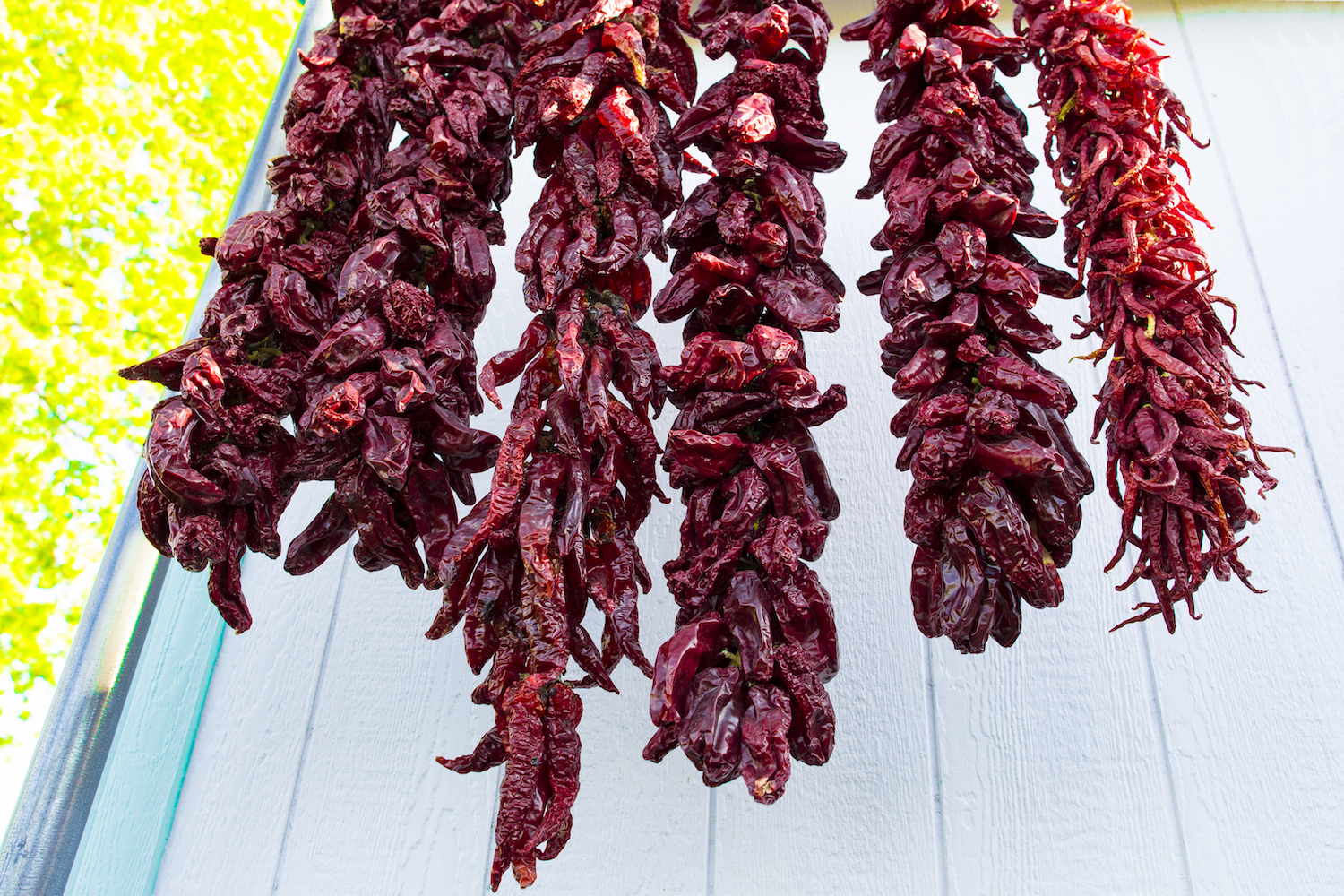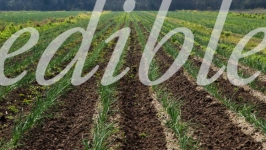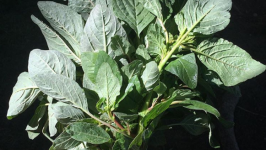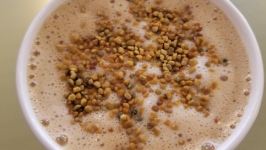Capsicum Culture
Growing up in a family food culture whose highlights included boxed chicken cordon bleu from the Schwann man and green pancakes on St. Paddy’s day, I’ve developed a fascination for the way entire groups of people can be threaded together through the daily fabric of a regional cuisine. Recipes passed down through generations, a cherished ingredient whose mere sight or aroma elicits a simultaneous surge of nationalism and nostalgia: like Thanksgiving, but daily.
Ever since our farm, Earthly Delights, first grew a crop of txorisero (chorizero) peppers for Leku Ona, a Basque restaurant in downtown Boise, they’ve enchanted me in exactly that way: a seasonal delicacy beloved by Basques both in Spain and here in Boise, home to the world’s largest population of Basques outside the Basque country.
The pointy-tipped peppers are picked green and lightly panfried in oil then sprinkled with salt and eaten as pinchos, the Basque version of tapas. From the first four-inch fruits of July through the summer, txoriseros are a staple pincho enjoyed with bread, cheese and wine. In late summer, the txorisero fruits are left to ripen on the plant, turning a deep, sweet red. Basque gardeners pick them and string them into long chains to air dry, and then use the dried peppers throughout the winter to make their famed Biskayan (Biscayne) sauce, which flavors everything from seafood to chorizo.
My txorisero seeds were given to me a decade ago by Lino Zabala, who grows them, along with several other Basque and Spanish pepper varieties each year, saving seeds from the best peppers to replant. For eight years, he’s kept Leku Ona supplied with txoriseros throughout the summer, but he’s retiring from the endeavor this year after two knee replacements, courtesy of his handball passion. He’ll only grow a couple of hundred pepper plants for his and wife Begone’s home use. Lino taught us how to plant our txoriseros two to a hole, close together. “They hold each other, shield each other from the sun, so the peppers are more tender,” he explained.
On my latest visit, he showed me his pepper chains, still hanging fat in his garage from last season’s harvest. He pointed out the subtle differences between his txorisero peppers and the gernikas that so many people mistake for them. Gernikas are shorter with rounded, not pointed tips and thicker skins. They make a better sauce, but the txoriseros are better for fresh eating. Lino and Begone agree.
And finally I get it: their horticultural pursuits are inextricably linked to their diet, which in turn is inextricably linked to their heritage, their culture, their community. As I try to squeeze answers to my own lack of culinary rootedness from them, searching for the stories behind their heirlooms, the significance of peppers to the Basque diet and culture, all they want to talk about is food. For them, there is no divide between culture and the kitchen.
While we CSA (Community Supported Agriculture) farmers scramble around growing a staggering variety of vegetables from every corner of the globe, many of which neither we nor our CSA members really know how to eat — at least not in this fabric-of-our-community-and-every-cell-of-our-being sense—Lino’s garden consists of a whopping number of pepper plants and leeks and several tomato varieties that are as familiar to them as family.
When I explained I was writing a story about Basque heirloom peppers, Lino and Begone shook their heads. “These aren’t heirlooms, ” Begone said. “They’re just peppers.”
“But how long have you been growing them?” I pressed.
“Oh, at least forty years,” Lino said. “And my family always grew peppers and tomatoes in Spain when I was growing up.”
“And my parents grew them before that,” Begone added. So, in honor of Lino and Begone and all the folks who already enjoy an ancient and robust regional food culture, I will end with what really matters: the varieties, and what you do with them.
A few of Lino and Begone’s other favorite peppers are the smaller, gernika-shaped piquillos , which are picked red and used for pinchos, and morrones, a huge, three-lobed sweet bell type they swear is at least twice as thick as a regular bell. They roast them, peel off the charred skins and store them in dozens of vacuum packed freezer bags for winter eating with meat and fish, and as a substitute for potatoes.
“If you told me I could have 100 bell peppers, I’d rather have one of the morrones,” Begone says with complete conviction.








